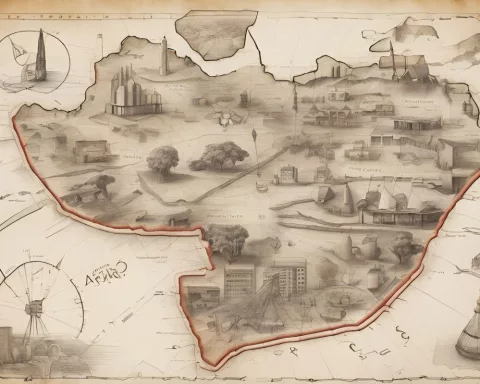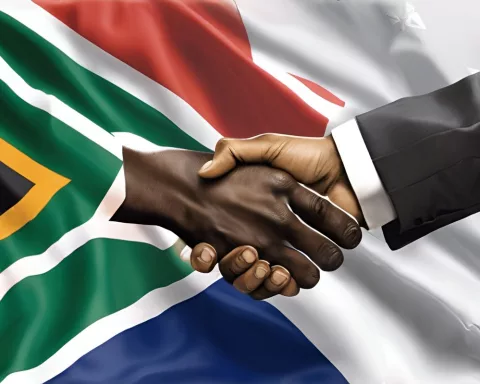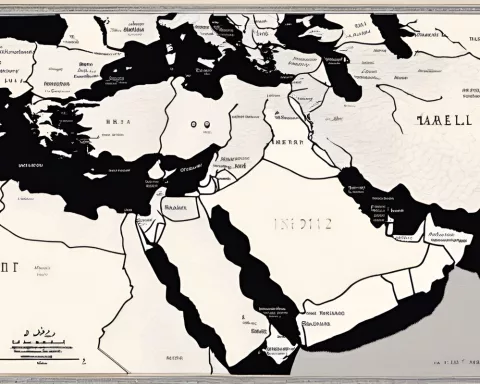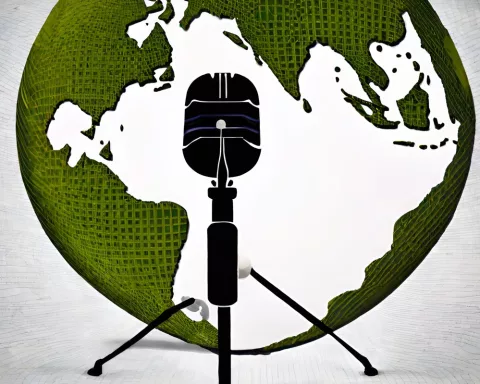South Africa has taken a groundbreaking step towards Africa’s economic prosperity by initiating preferential trade under the African Continental Free Trade Area (AfCFTA), which aims to boost intra-continental commerce and industrialization in Africa. The transformative potential of AfCFTA lies in its capability to expedite the growth of regional and local value chains, offering investors access to a rapidly expanding continental GDP and a population of 1.7 billion people. The AfCFTA intends to exploit this continental market to boost agricultural development and food security while ensuring that young people and women-led firms are active in export markets.
What is AfCFTA and How can it Benefit Africa’s Economy?
The African Continental Free Trade Area (AfCFTA) is a framework designed to boost intra-continental commerce and industrialization in Africa. With preferential trade now initiated under AfCFTA, there is a critical focus on establishing origin rules that determine an ‘African product.’ The transformative potential of AfCFTA lies in its capability to expedite the growth of regional and local value chains, offering investors access to a rapidly expanding continental GDP and a population of 1.7 billion people. It also aims to boost agricultural development and food security, with special attention given to ensuring women-led firms are active in export markets.
A New Era in Trade Relations
In a significant turn in Africa’s economic trajectory, South African President Cyril Ramaphosa presided over a monumental event at the Port of Durban, eThekwini. The President, joined by esteemed guests from AfCFTA State Parties, business executives, and political leaders, celebrated the initiation of South Africa’s preferential trade under the framework of the African Continental Free Trade Area (AfCFTA).
A palpable breakthrough occurred as the first consignment of goods from South Africa to other AfCFTA countries embarked from the bustling port city. This act validates the execution of the AfCFTA vision – which anticipates a more empowered, greater Africa through a significant boost in intra-continental commerce.
Reflecting on Africa’s trade history reveals the core issue: the continent has predominantly exported raw materials globally, rather than leveraging its natural resources for industrialization. This pattern, however, is due for a transformation. As Africa steps into the AfCFTA’s era, there will be a critical focus on establishing the origin rules that determine an ‘African product.’ To enable this pivotal shift, trade ministers have dedicated themselves to finalizing these rules for 92% of the commodities that nations trade amongst themselves over the past years.
The Potential of Intra-Continental Trade
This laudable endeavor ensures that products exchanged among African nations are genuinely ‘Made in Africa’. Yet, the President made it clear that more ambitious policies, especially for the trade in services which has been outpaced by goods’ trade, are necessary. The bold vision of the AfCFTA includes nurturing African leaders in finance, retail, and telecommunications, besides fostering tourism within African nations. This approach paves the way for sustainable and quick economic growth.
The African Continental Free Trade Area, with its enormous scope – being the world’s most extensive free trade area by country count – provides vast prospects for Africa’s economies and businesses. AfCFTA’s transformative potential lies in its capability to expedite the growth of regional and local value chains, thereby offering investors access to a rapidly expanding continental GDP and a population of 1.7 billion people.
The crux of Africa’s integration is industrial development, which enhances productive capacity, adds value to goods, and diversifies trade beyond conventional commodities. President Ramaphosa underscored this point by spotlighting the evolution of a value chain in the automotive industry. South African car companies source components like leather seats, wiring harnesses, copper wire, rubber, and steering wheel parts from various African countries, culminating in the export of finished cars globally. This showcases the vast potential for further inter-border collaboration.
AfCFTA: A Catalyst for Growth and Development
There’s a substantial margin for growth, but it necessitates robust origin rules. As the world pivots towards green industrialization, Africa is strategically positioned to harness its crucial minerals for continental industrialization. The potential spans across sectors like food and beverages, automobiles, apparel and textiles. Africa also has the potential to increase its production of pharmaceutical products and medical equipment, as well as chemicals, machinery, and household goods.
The AfCFTA intends to exploit this continental market to boost agricultural development and food security. Special attention will be given to ensuring that young people and women-led firms are active in export markets. The Protocol on Women and Youth in Trade aims to ensure that the African Continental Free Trade Area contributes to inclusive growth and development.
Although intra-African trade levels have risen in recent years, they are still not on par with global standards. Current estimates indicate intra-African exports comprise about 16% of Africa’s total exports, compared to 55% in Asia, 49% in North America, and 63% in the European Union. The inauguration of preferential trade under AfCFTA is expected to significantly alter these figures, creating enormous opportunities for growth and development.
Infrastructure Development and Future Prospects
The cascading effects of this significant step are not confined to South African producers. The country’s ports, airports, and land-based border posts are also predicted to see a marked increase in traffic. Products manufactured in various parts of South Africa will move through these ports to markets beyond their borders.
To accommodate this anticipated increase, the South African government is eager to implement its Freight Logistics Roadmap. This aims at enhancing the efficiency and competitiveness of the country’s railways and ports. Moreover, a concerted effort is underway to repair Transnet’s rail and port operations and ensure more significant infrastructure investment in the future.
As Africa embarks on this new chapter, it stands on the brink of a new era of growth and prosperity. Thanks to the collective efforts of the Secretary General of the AfCFTA Secretariat, the AfCFTA Council of Ministers, Minister Ebrahim Patel, and his team, the aspiration of preferential trading is now a reality. The exporters who have seized this opportunity are commended for their vital role in this transformative journey.
From the quayside at the Port of Durban, and from other ports, airports, and border posts across the continent, it is evident that a bright future is on the horizon for Africa and its people.
1. What is AfCFTA?
AfCFTA stands for the African Continental Free Trade Area. It is a framework designed to boost intra-continental commerce and industrialization in Africa.
2. How can AfCFTA benefit Africa’s economy?
AfCFTA has the potential to expedite the growth of regional and local value chains, offering investors access to a rapidly expanding continental GDP and a population of 1.7 billion people. It also aims to boost agricultural development and food security, with special attention given to ensuring women-led firms are active in export markets.
3. What is the focus of establishing origin rules in AfCFTA?
There is a critical focus on establishing origin rules that determine an ‘African product.’ This ensures that products exchanged among African nations are genuinely ‘Made in Africa’.
4. What is the potential of intra-continental trade under AfCFTA?
AfCFTA’s transformative potential lies in its capability to expedite the growth of regional and local value chains, thereby offering investors access to a rapidly expanding continental GDP and a population of 1.7 billion people. The crux of Africa’s integration is industrial development, which enhances productive capacity, adds value to goods, and diversifies trade beyond conventional commodities.
5. What is the Protocol on Women and Youth in Trade?
The Protocol on Women and Youth in Trade aims to ensure that the African Continental Free Trade Area contributes to inclusive growth and development by ensuring that young people and women-led firms are active in export markets.
6. What infrastructure development is needed for AfCFTA?
To accommodate the anticipated increase in traffic, the South African government is eager to implement its Freight Logistics Roadmap, which aims at enhancing the efficiency and competitiveness of the country’s railways and ports. Moreover, a concerted effort is underway to repair Transnet’s rail and port operations and ensure more significant infrastructure investment in the future.












